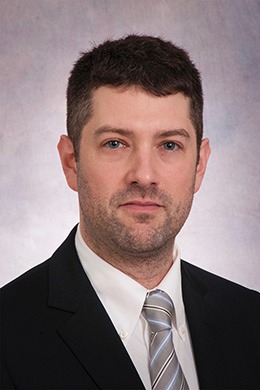The Role of HMGB1 in Pulmonary Hypertension
 Neil Goldenberg, MD, PhD
Neil Goldenberg, MD, PhDStaff Anesthetist
Department of Anesthesia and Pain Medicine
Scientist, Program in Cell Biology
The Hospital for Sick Children
Assistant Professor, Departments of Anesthesia and Pain Medicine and Physiology
John Alchin and Hal Marryatt Early Career Professor in Anesthesiology and Pain Medicine
The University of Toronto
Toronto, Ontario, Canada
Since early in his career, Neil Goldenberg, MD, PhD, has been fascinated by the vast possibilities for scientific inquiry in academic anesthesiology and the opportunity to formulate unique and interesting research questions. One of his first inquiries began with his study on “The Role of HMGB1 in Pulmonary Hypertension” and was recognized with a 2018 IARS Mentored Research Award. Today, as an Assistant Professor in Anesthesia and Pain Medicine at University of Toronto, the study of HMGGB1 continues to be an important area of investigation for his work. Dr. Goldenberg credits much of his forward motion in research and his career to the early credibility in the specialty that the IMRA gave him. He remains inquisitive and eager to look outside the traditional definition of “anesthesia research” to discover novel insights for anesthesiology and patient care. Below, he provides a look inside his research path since receiving the 2018 IMRA and his hopes for the future of anesthesia research.
1. What is your current position? How long have you been in this position? What was your role when you were first funded by IARS?
I am currently a Staff Anesthesiologist at the Hospital for Sick Children, and a Scientist in the Program in Cell Biology. I am also Assistant Professor in Anesthesia and Pain Medicine, in the Dept. of Physiology, University of Toronto. I have had these positions since 2018 (Anesthesia), and 2022 (Scientist). At the time of my award, I was a Scientist-Track Investigator in Cell Biology.
2. What drew you to academic anesthesiology and to your particular area of research? Has your research subject area evolved since the award?
Academic anesthesiology, at least where I practice, is a vibrant field that was incredibly attractive to me as a trainee. I believe several factors contribute to this. One is the nature of our work, where we are a part of so many different potential scientific lines of inquiry (anesthetic mechanisms, pain, clinical outcomes, cardiovascular science, neuroscience, pulmonary science, etc.). We have a unique perspective at the crossroads of these fields which allows us to formulate unique and interesting research questions. Another factor is the specific culture of my university and institution, where our leadership has engrained a strong academic culture, and our departmental structures facilitate this work. My work focuses on lung vascular inflammation in the context of pulmonary hypertension. I moved toward this field during my postdoctoral fellowship, and that is still my focus.
3. What was the goal of your initial research project? Was it met?
My initial research project sought to delineate the role of HMGB1 in the pathogenesis of pulmonary hypertension. We have largely met this goal, although of course every answer brings forward another ten questions. We were able to publish several papers detailing our work in HMGB1 antagonism in PAH models, as well as basic mechanisms of HMGB1 secretion from macrophages. HMGB1 release continues to be an important area of our work.
4. How did your findings impact patient care?
My work is basic/translational, working upstream of clinical care. While this work has not yet impacted patients directly, we are striving toward this for the future. Furthermore, by disseminating my work (talks, papers, etc.), I hope that we can show clinicians the future that lies ahead, and increase awareness of mechanisms of disease, perhaps spawning even more important work in the field.
5. How did your research impact the field of anesthesiology?
As above, we work upstream of clinical care. However, my work drives the field forward, and my successes are important, visible milestones met by a member of our field. Every impactful research project carried out by an anesthesiologist brings important focus to the work done in our field.
6. How did the award affect your research/professional trajectory?
The award provided me early credibility in my field. Given the prestige and size of the award, I believe strongly that this award helped me gain further awards in the subsequent years. Furthermore, the award provided me with critically important funding during the earliest stage of my lab, when it was needed most.
7. How do you feel about having received the IARS Mentored Research Award?
This award continues to be a source of pride to me, and a source of recognition in my field.
8. What is something that someone would be surprised to learn about you?
I originally wanted to be a surgeon.
9. What is your vision for the future of anesthesia research?
My vision is that anesthesia continues to grow as a powerhouse in global research. Most importantly, I hope that anesthesiologists continue to broaden the definition of “anesthesia research,” moving out from traditional areas into many other fields in which we have novel insights.
“The [IMRA] provided me early credibility in my field. Given the prestige and size of the award, I believe strongly that this award helped me gain further awards in the subsequent years. Furthermore, the award provided me with critically important funding during the earliest stage of my lab, when it was needed most.”
– 2018 IARS Mentored Research Award Recipient Neil Goldenberg, MD, PhD
International Anesthesia Research Society
